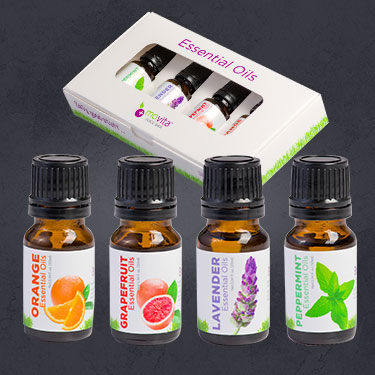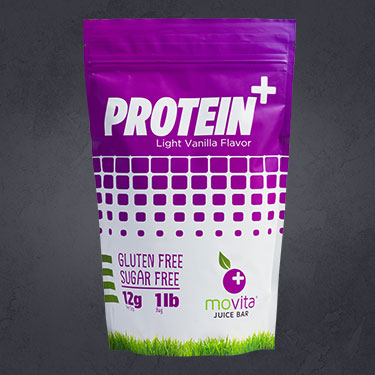
The Battle: Americans are eating too much fat and too many calories, not enough fruits and vegetables. These poor eating habits increase the risk of cancer. 35% of all cancers may be linked directly to diet.
The Mission: Reduce cancer risk by eating a plant-rich diet, which contains chemoprotective (cancer-protective) phytochemicals (plant-chemicals).
The Weapons: Fruits, vegetables and other plant-rich foods such as grains and legumes.
How Phytochemicals Can Be Our Most Powerful Weapons Against Cancer
To understand how phytochemicals protect us from cancer, it is important to show how the growth of a malignant tumor is a long, slow process that involves the three steps listed below.
STEP 1: Initiation
A healthy cell is injured in a way that disrupts the genetic instructions to produce a normal duplicate.
Enemy: Free radicals (produced by the oxygenation process) are toxic agents that damage a cell’s DNA.
Weapon: Phytochemicals such as polyphenols in green tea and lycopene in tomatoes act as antioxidants to help neutralize free radicals, therefore rendering them harmless.
Enemy: Procarcinogens (nitrites, cigarette smoke, & alcohol)
In order for these cancer-causing chemicals to become carcinogens they must first be broken down into small pieces by the liver’s phase I enzymes*.
Weapon: The phytochemical allyl sulfide in garlic, chives, and onions, helps limit the production of phase I enzymes. The liver also produces phase II (detoxification) enzymes* that deactivate carcinogens and free radicals, thus enhancing the body’s own defense system against cancer-causing chemicals. The phytochemical sulforaphane found in broccoli, cauliflower, & other cruciferous vegetables, acts by boosting the activity of these phase II enzymes.
*To eliminate carcinogens from the body, the liver has its own disposal system- phase I and phase II enzymes- that work in sequence.
STEP 2: Promotion
For tumors to form, initiated cells must go through this step where a damaged cell begins to multiply out of control. Diet plays the most crucial role at this promotional stage.
Fuel: Omega-6 fatty acids (better known as corn oil & safflower oil) promote tumor growth. Code name: Bad Fats
Weapon: Omega-3 fatty acids in flaxseed and fatty fish (salmon & tuna) may inhibit tumor growth by locking bad fats out of cells.
Fuel: Estrogen promotes fast growth of breast cells in women.
Weapon: Isoflavones in soy foods may protect breast cells by acting as weak estrogens, leaving less room for estrogen to bind to receptor sites.
STEP 3: Progression
At this step, cancerous lesions may turn into a tumor that can invade other tissues.
Enemy: Growth factors, released from tumors, promote angiogenesis or the development of new blood vessels. Once a tumor has its own blood supply, chances of reversal are slim.
Weapon: The phytochemical resveratrol in red grapes and red wine slows the growth of cancerous cells by suppressing the tumor’s production of growth factors. This in turn chokes off their blood supply causing them to die off rather than spreading to healthy cells.
THE BOTTOM LINE:
Research data suggests that what Americans eat may be as important as what they do not eat. Eating a wide variety of fruits, vegetables and other plant-rich foods will provide many of the non-essential phytochemicals that offer protection against cancer and other chronic diseases.
Knowing that phytochemicals offer protection at every step in the progression of cancer, researchers believe that the chemoprotective advantages of phytochemicals may extend to the treatment of cancer as well. While further research into the chemoprotective powers of numerous phytochemicals is needed and currently underway, it looks like eating your fruits and vegetables as part of a healthy diet may help reduce the risk of cancer.
Recommendations:
-Consuming fruits, vegetables, beans, and grains is the most beneficial; eat whole foods rather than popping pills.
-Eating a greater variety of fruits, vegetables & other plant-rich food sources will allow you to get most of your beneficial chemoprotective phytochemicals, without getting too much of any potentially adverse chemicals such as natural pesticides which can be toxic in large amounts.
-The American Institute for Cancer Research recommends to eat plenty of fruits and vegetables (5 or more servings daily) and a variety of other plant-rich foods (7 or more servings daily of grains, legumes, etc.).
-Try unfamiliar foods rich in phytochemcials such as flaxseeds.
DISCLAIMER: These statements have not been evaluated by the FDA. The information is for informational purposes and is not intended to treat, diagnose or cure any illness. Consult a physician before taking any action.
Want to contribute great content?
We are looking for contributors provide our readers with great healthy content to encourage positive living. If you're interested in becoming a contributor pease email us at blog@movitajuicebar.com



